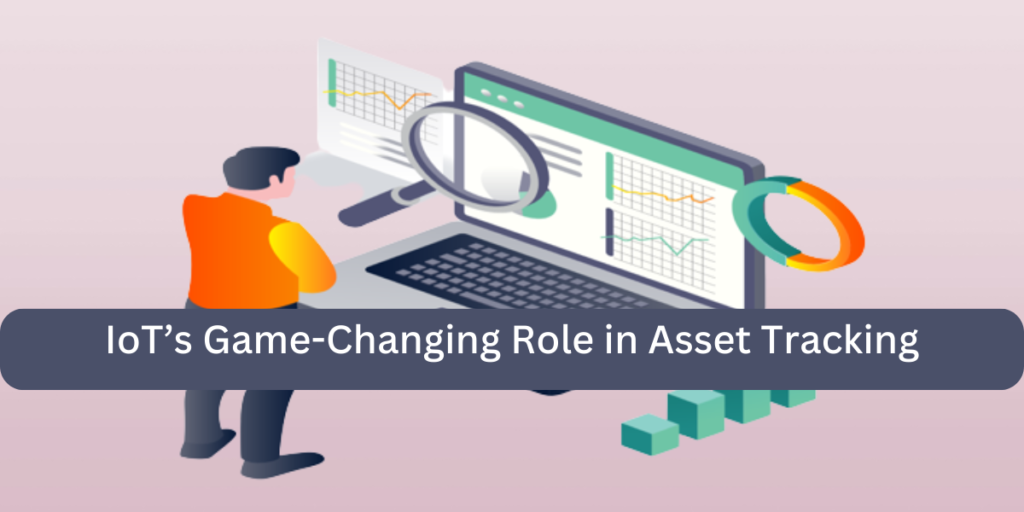IoT’s Game-Changing Role in Asset Tracking
Introduction
The concept of asset tracking has evolved from a logistical necessity to a strategic imperative. The ability to monitor and manage assets efficiently not only streamlines operations but also has profound implications for cost savings and overall business performance. At the forefront of this revolution is the game-changing technology—the Internet of Things (IoT). In this blog, we’ll delve into the concept of asset tracking, explore the role of IoT, outline the key benefits, discuss the technologies involved, touch upon future trends, and conclude with the transformative impact this synergy has on industries.
Concept of Asset Tracking
Asset tracking, in its essence, involves monitoring and managing physical assets throughout their lifecycle. This includes everything from inventory management and supply chain operations to real-time tracking of high-value assets. This method was formerly manual, time-consuming, and error-prone. However, with technological advancements, especially the integration of IoT, asset tracking has become a sophisticated and automated discipline.
What Is IoT?
The Internet of Things, or IoT, refers to the interconnected network of devices embedded with sensors, software, and other technologies to exchange data over the Internet. In the context of asset tracking, IoT acts as the central nervous system, facilitating seamless communication between physical tracking devices, robust connectivity, and advanced data management systems.
Role of IoT in Asset Tracking
The integration of IoT in asset tracking is a paradigm shift. It transforms asset tracking from a passive process to a dynamic and intelligent system. IoT enables real-time monitoring, data acquisition, and analysis, thereby automating tasks that were once labor-intensive. It acts as the catalyst for enhanced operational efficiency and organizational excellence.
Key Benefits of IoT in Asset Tracking
1. Automation of Manual Tasks: The labor-intensive tasks of inventory management and supply chain operations are automated, generating significant value for the logistics and supply chain sectors.
2. Enhanced Monitoring and Tracking: Real-time insights and analytics empower businesses to monitor and track assets efficiently, contributing to a compound annual growth rate (CAGR) of 27.1% in IoT asset-tracking solutions by 2026.
3. Mitigation of Replacement Costs: IoT reduces the costs associated with replacing lost or misplaced assets by offering real-time location data, resulting in a 30% reduction in search times.
4. Minimization of Human Errors: By diminishing the necessity for human intervention, IoT mitigates the risk of errors in data, leading to a 5-10% increase in manufacturing efficiency.
5. Accessibility and Affordability: IoT makes advanced asset tracking solutions accessible and affordable, with 84% of businesses achieving significant cost savings and efficiency improvements.
6. Enhanced Data Analysis and Insights: Comprehensive data analysis and insights enable informed decision-making processes, with 45% of organizations experiencing increased operational efficiency through IoT-generated insights.
7. Improved Inventory Accuracy: Real-time updates and reduced discrepancies in stock levels contribute to a 49% increase in inventory accuracy.
Key IoT Technologies Used in Asset Tracking
• GPS for Real-time Location Tracking: Particularly beneficial for logistics and fleet management.
• Barcodes and QR Codes: Cost-effective solutions suitable for various industries.
• Bluetooth Low Energy/Beacons: Facilitating proximity-based tracking in various environments.
• Radio-Frequency Identification (RFID): Widely used in retail for efficient tracking.
• Wi-Fi and Near-Field Communication (NFC): Serving different industries with varied needs.
Future Trends in IoT & Asset Tracking
The future of IoT in asset tracking is exciting. Anticipated trends include advancements in battery technology for extended device life, improved location accuracy for precise tracking, and the integration of AI for more intelligent data analysis. Additionally, the customization and scalability of solutions will be key, allowing businesses to adapt to evolving needs seamlessly.
Conclusion
The fusion of IoT and asset tracking is reshaping industries and setting new standards for operational efficiency. The benefits derived from this synergy are multifaceted, ranging from automation and enhanced monitoring to cost savings and improved accuracy. As we look toward the future, the continued evolution of technology will undoubtedly unlock even more possibilities, emphasizing the need for businesses to embrace innovation and redefine operational success in an ever-evolving landscape. IoT’s game-changing role in asset tracking is not just a technological advancement; it’s a strategic imperative for businesses aiming to stay ahead in the competitive and dynamic world of modern commerce.

